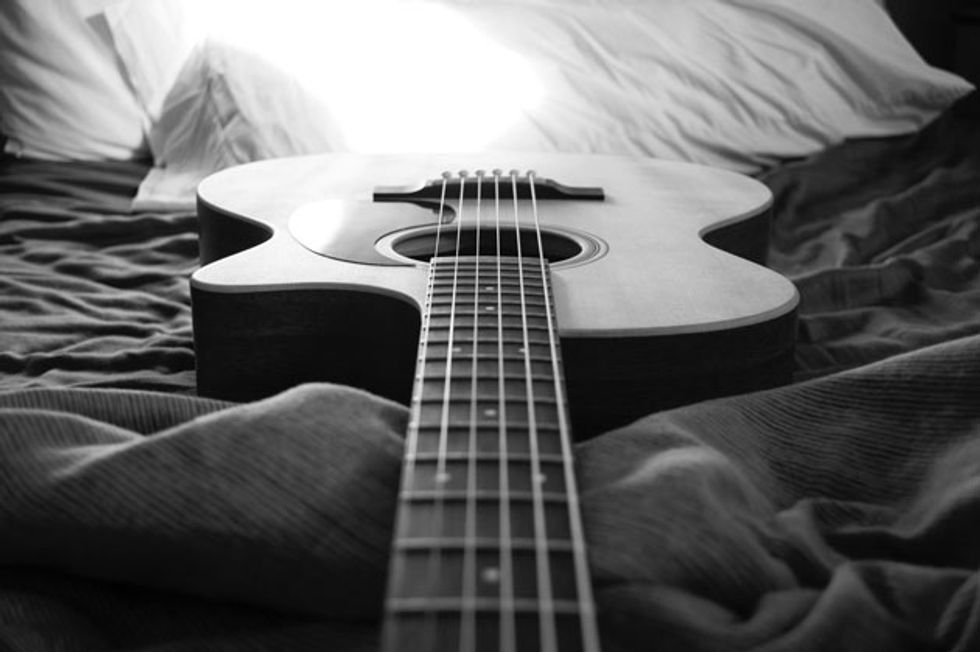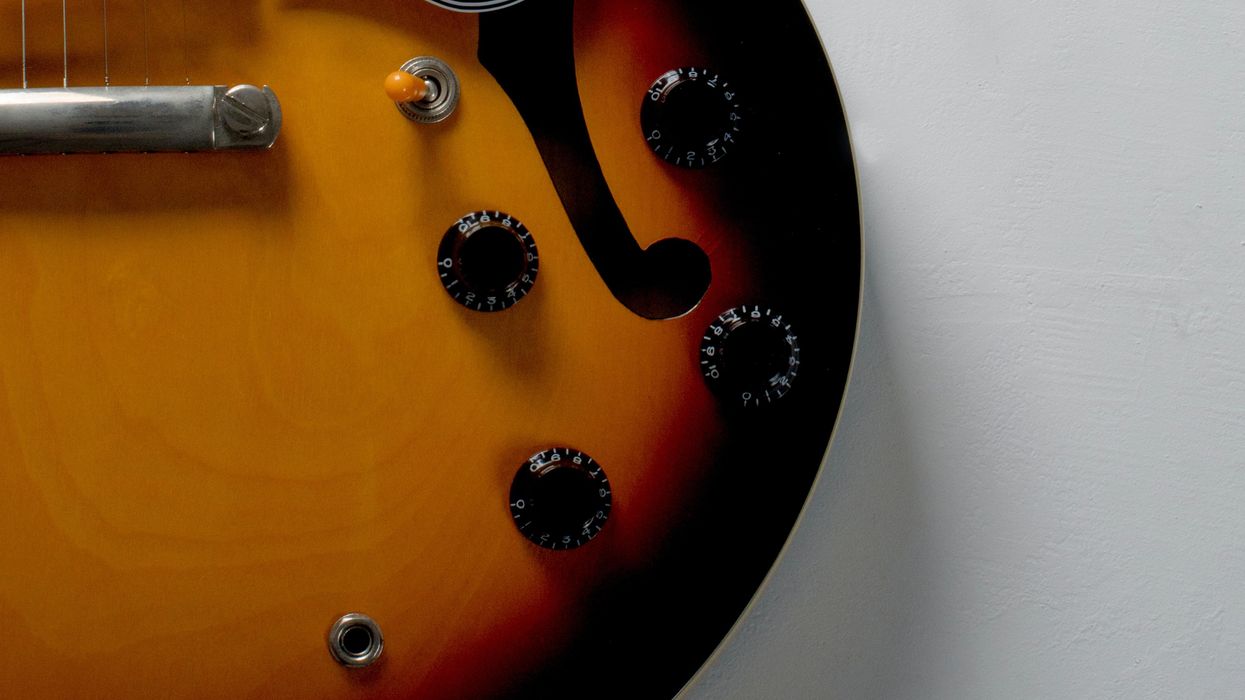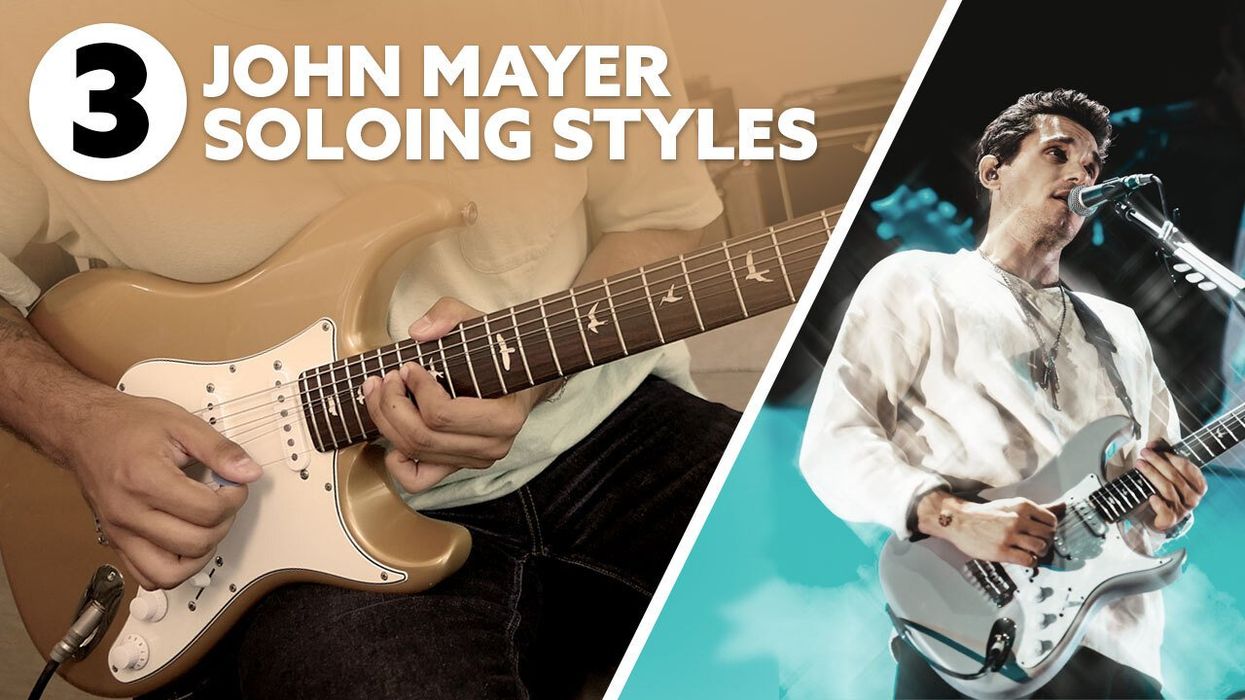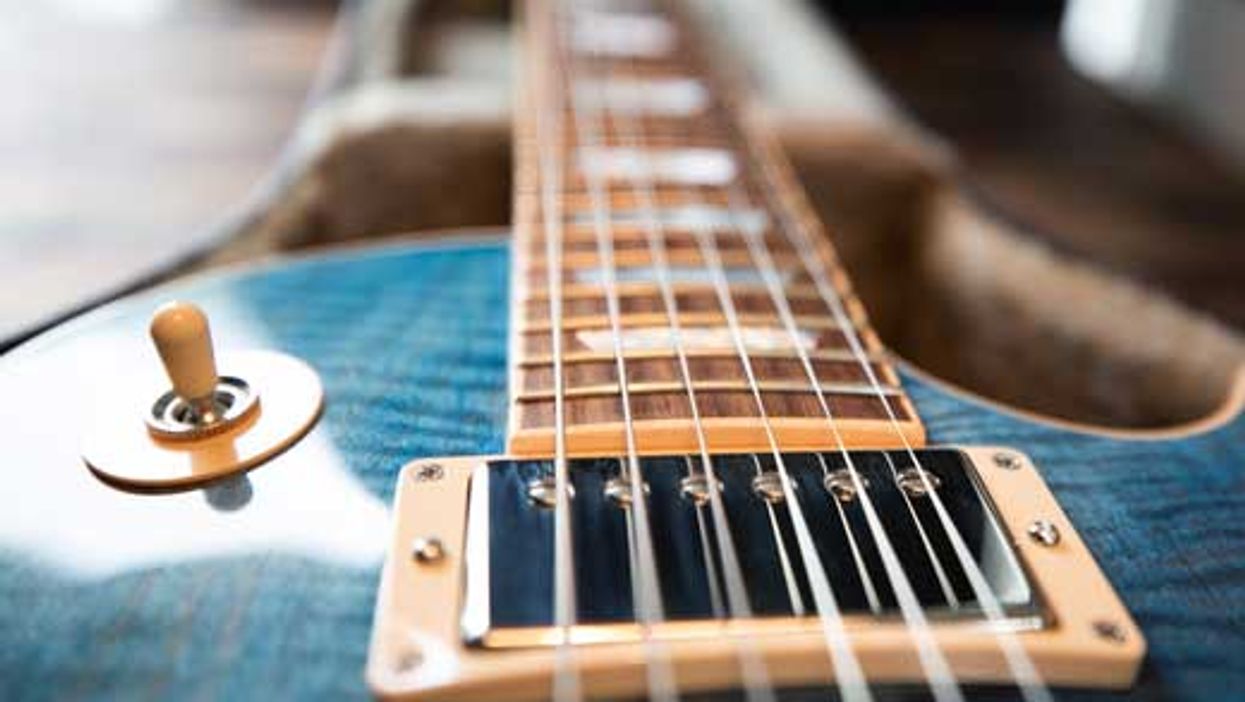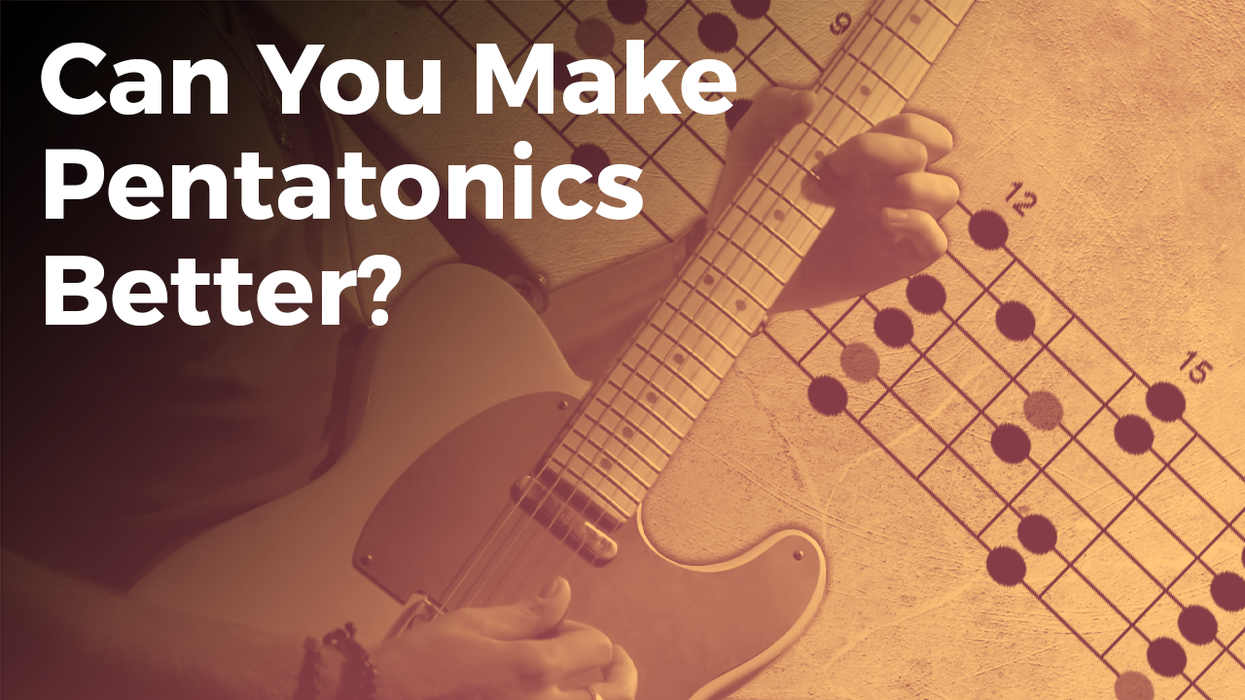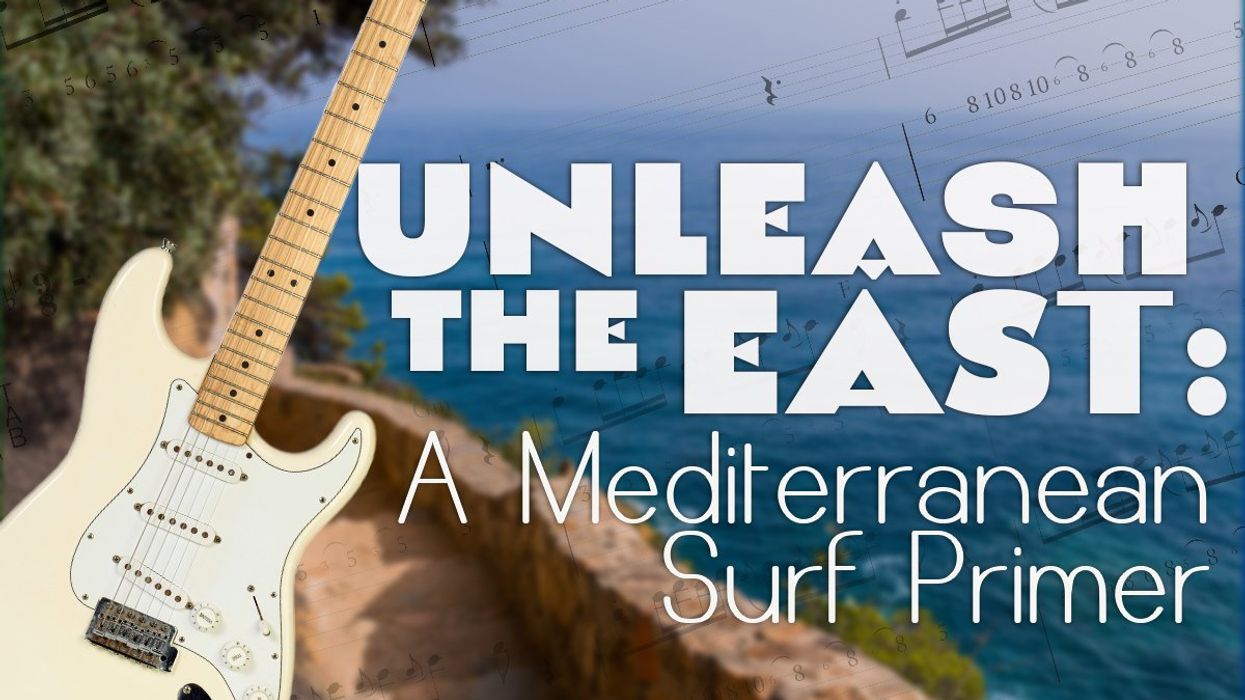The main focus of this column is improvisation. We’ll be looking at things from a jazz improv viewpoint, but you can apply these concepts to any style of music. If you want to know how to sound consistently good when writing melodies or improvising musical lines, you must know your chords. Before we get into the nitty gritty of making your lines sound strong, first I want to make sure you have some things under your belt.
A Chord is a Scale and a Scale is a Chord
Yes, I’m going to argue that the exact same notes you use to build a scale are the same notes you use to build chords. However, it’s how you organize them that makes the difference. Here’s a C major scale (or C Ionian, if you prefer): C–D–E–F–G–A–B.
Now, if we take those seven notes and arrange them into thirds, we get the following: C–E–G–B–D–F–A. Numerically that relates to 1–3–5–7–9–11–13.
Notice that the 9, 11, and 13 (D, F, and A) are the same notes as the 2, 4, and 6. For the purpose of this lesson we’re going to focus on the root, 3, 5, and 7. (Sometimes we’ll replace the 7 with 6.) We refer to the 9, 11, and 13 as extensions that add color to the sound. Most of the definitive harmony will come from the root, 3, and 5, but we jazzbos often include the 7 or 6.
Compare and Contrast
Below, I’ve laid out all the essential combinations of triads and four-part chords using C as our root. Let’s start with triads.
C = C–E–G
Cm = C–Eb–G
Cdim = C–Eb–Gb
Csus = C–F–G
Caug = C–E–G#
Four-part chords take the foundation of the aforementioned triads and add either a 7 or 6. As you can see, adding one note exponentially increases all the possibilities. If you study the first three chords, each one contains a major triad (C–E–G). It’s the fourth note that sets each chord apart: 7, b7, or 6 (B, Bb, or A).
Cmaj7 = C–E–G–B
C7 = C–E–G–Bb
C6 = C–E–G–A
Cm (maj7) = C–Eb–G–B
Cm7 = C–Eb–G–Bb
Cm6 = C–Eb–G–A
Cm7b5 = C–Eb–Gb–Bb
Cdim7 = C–Eb–Gb–Bbb(A)
Cdim (add maj7) = C–Eb–Gb–B
C7sus = C–F–G–Bb
Cma7#5 = C–E–G#–B
C7#5 = C–E–G#–Bb
Whipping off the 1, 3, 5, and 7, à la Yngwie Malmsteen, will get you the desired sound. In a future lesson, we’ll explore strategies for playing the chord tones more creatively.
Chord Chemistry
Triads
C = 1–3–5
Cm = 1–b3–5
Cdim = 1–b3–b5
Csus = 1–4–5
Caug = 1–3–#5
Four-Part Chords
Cmaj7 = 1–3–5–7
C7 = 1–3–5–b7
C6 = 1–3–5–6
Cm (maj7) = 1–b3–5–7
Cm7 = 1–b3–5–b7
Cm6 = 1–b3–5–6
Cm7b5 = 1–b3–b5–b7
Cdim7 = 1–b3–b5–bb7
Cdim (add maj7) = 1–b3–b5–7
C7sus = 1–4–5–b7
Cma7#5 = 1–3–#5–7
C7#5 = 1–3–#5–b7
Lay of the Land
Many players visualize the fretboard as a grid, but I also think of it as comprising six individual keyboards—each string is laid out just like a monophonic keyboard. Let’s map the notes of the chords that we have spelled out above. I want you to be able to see the notes up and down your fretboard, not simply learning chord shapes and grips. Why? Because I want you to know what notes you’re choosing. Plus, you’ll learn your fretboard better. We will practice these up and down each string.
Grab Your Guitar
Homework: Start with the triads and play each note up and down each individual string. Start with the lowest note possible of each chord. In addition to announcing each note name out loud as you play it, it’s a good idea to also be aware of that note’s role in the chord: the 3, the b5, etc. Practice slowly at first with a metronome, gradually increasing the tempo. The faster you can play them without too many mistakes, the better you know them. Ex. 1 illustrates the process on the 6th string.
Ex. 1
Next, start working on the four-part chords. Remember, you’ve already figured out where most of the notes are. You’re just adding a fourth one. Singing each note as you play all the chords helps get the sounds in your ear. And finally, work through the circle of fourths and fifths so you don’t miss any keys. In Ex. 2, I play all 12 maj7 chords on the first string, while moving around the circle in fourths.
Ex. 2
Happy practicing!
